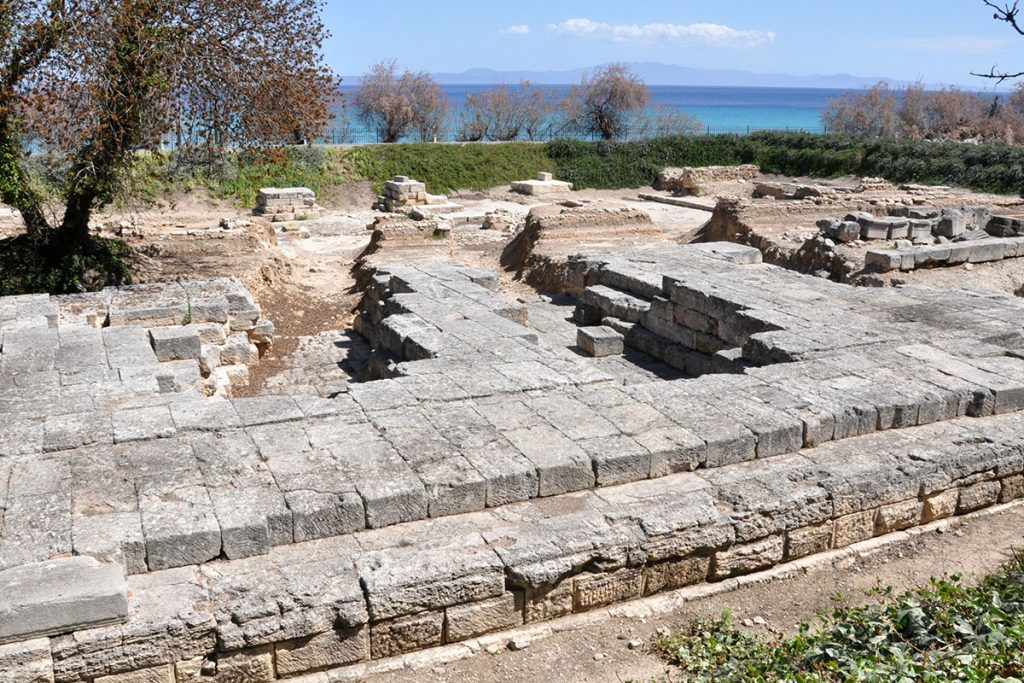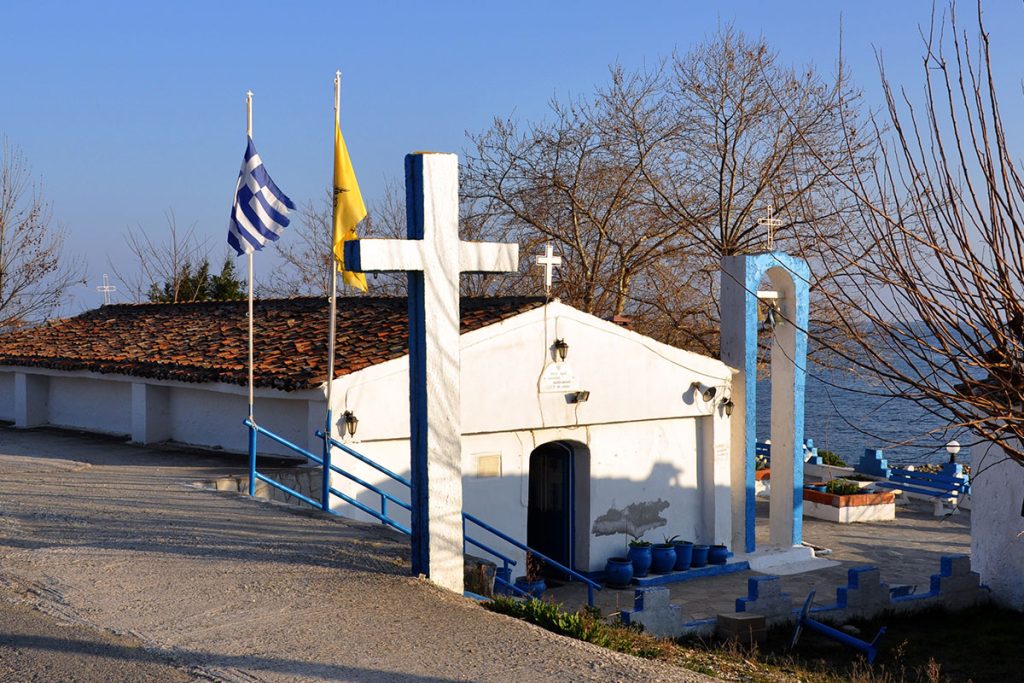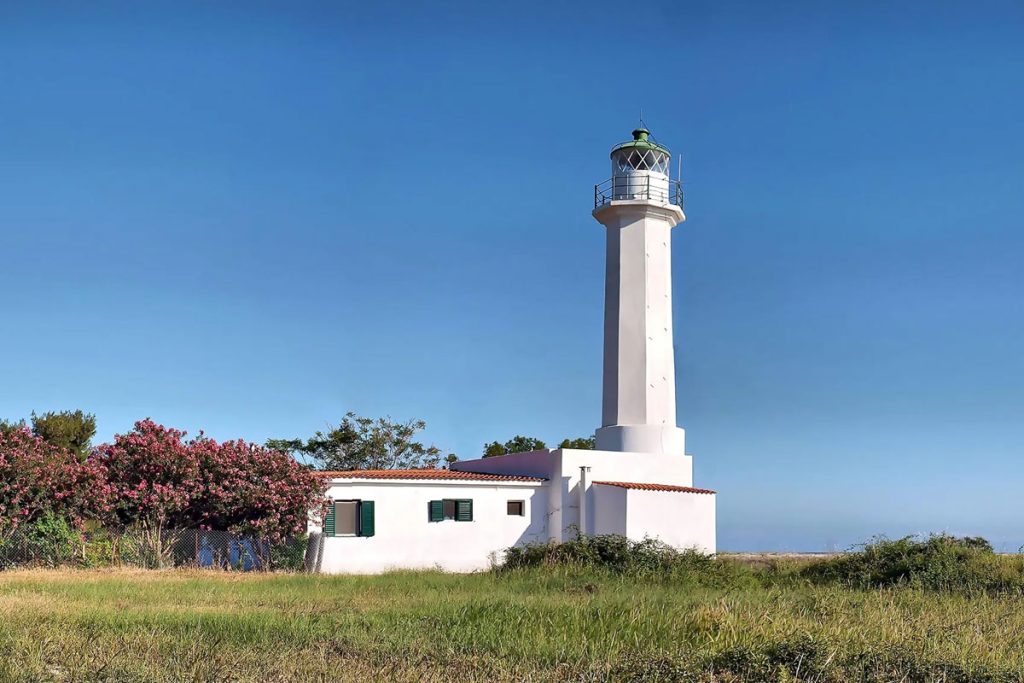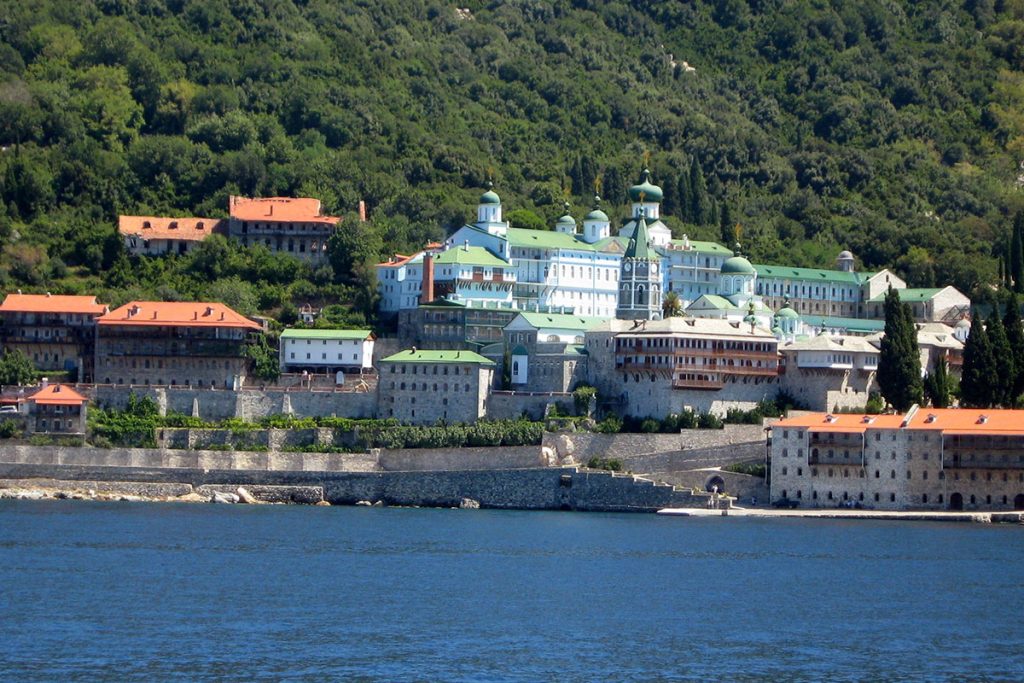
Temple of Ammon Zeus
A notable historical site in the charming area of Halkidiki is the Temple of Ammon Zeus. Originating in the later half of the eighth century B.C., Euboean inhabitants from Afitis built the ancient Dionysus Sanctuary.
Here, under the shadow of a cave tucked behind the rocky terrain southwest of the site, they worshipped Dionysus in company with the Nymphs.
The sanctuary to the Egyptian god Zeus Ammon was built on a tiny plateau on the northern edge of this holy place. An altar was built in the later half of the 4th century B.C., and next to it was an addition of a Doric temple including a stone entablature.
The altar dates back to the late 5th century B.C. This historical complex serves as a reminder of the diverse array of prehistoric religious practices and architectural marvels that have adorned Halkidiki over the ages.

Panagia Faneromeni
The charming “Panagia Faneromeni” church, a timeless beauty that has charmed Halkidiki since the 16th century, is located just 2 km from Nea Skioni. This exquisite church is home to a priceless symbol of the Madonna that is specially painted on the base of a statue, contributing to its ethereal beauty.
According to legend, this holy symbol set off on a remarkable voyage from Thessaly and travelled by sea to Halkidiki, where it arrived at the church, its eternal home. In addition to housing the icon, the chapel tells the engrossing tale of its arrival, educating guests about the awe and history around it.
Entering the “Panagia Faneromeni” chapel provides a chance to explore the miraculous story of the Madonna image and provides a deep look into the place’s spiritual and historical fabric. It is evidence of the rich cultural legacy of Halkidiki’s ongoing appeal.

Lighthouse of Possidi
Possidi Beach ends in an old, immaculate whitewashed lighthouse that is a symbol of maritime charm and heritage. This famous building was built in 1864 to guard the edge of the water, but as the sea has gradually retreated, it has left behind a freshly created stretch of sandy shoreline that was created as a result of sedimentation.
This time-tested lighthouse in the colonial architecture still fulfils its original function and is a fully functional navigational aid. The little, flower-filled garden that encircles it adds a lovely touch to its charm and improves its aesthetic appeal.
Discover this classic nautical artefact and become engrossed in Possidi Beach’s intriguing past.
The temple of Poseidon, constructed on a spit of land near the sea, lies four kilometers west.

Mavrobara lake
Mavrobara is located very close and it is a place of rare beauty and great ecological importance.
It is a freshwater lake covering a total area of 2,200 m2, located 300 meters above sea level. The lake was created by geological landslides.
Its calm water gives shelter to two rare water turtle species, belonging to the families “Emydidae”, “emys orbicularis” and “Mauremys caspica”.
The number of individuals of each of these species has increased in recent years and this is very encouraging for their future

Mount Athos
The ‘Holy Mountain,’ a community that is customarily exclusive to women and children, is also regarded as a unique creative sanctuary.
Twenty majestic monasteries are situated in a lush Mediterranean scenery ornamented with varied indigenous forests and lovely chestnut trees on the raised topography of Mount Athos.
Covering an area of more than 33,000 hectares, this enormous estate stretches over the whole narrow rocky stretch that forms the easternmost of Halkidiki’s three peninsulas that reach into the Aegean Sea in northern Greece.
A variety of auxiliary institutions can be found inside this hallowed sanctuary, such as skites, kellia, and kathismata, which are the dwellings and prayer areas cared for by the pious monks who reside there. These monks balance their spiritual aspirations with the care of the land, therefore agriculture plays a crucial part in their everyday life.
Travelers are drawn to this special and historically noteworthy location to discover its alluring nexus of spirituality and scenic beauty.

Tower of Nea Fokea
Hallmark of the village, this Byzantine Tower holds a dominant position on the hill at the right side of Nea Fokea’s port.
It is made of stone, is 28 meters high and it’s the only one to have survived up to its crenellations. It is speculated that it was built in 1407 on a prehistoric site to protect the monastic metochion of St. Paul’s Monastery. In 1821 it was set on fire, but its roof was reconstructed in 1976.
Around the tower, there are ruins of the east and south wing of the metochion, as well as a small temple from 1868. This tower hosted in 1821 the headquarters of Emmanouil Papas, the leader of the Greek War of Independency in Halkidiki.



